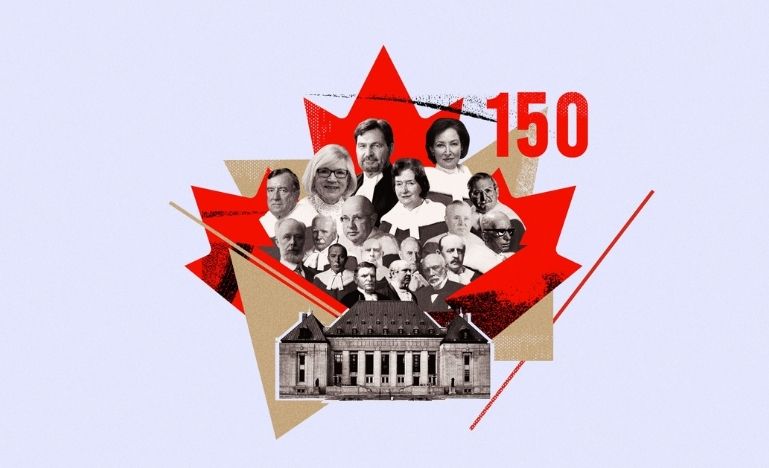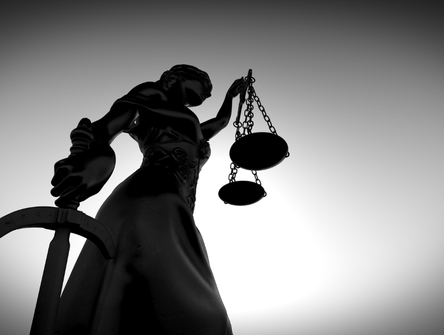The humans behind the decisions
As the Supreme Court of Canada turns 150 this year, former clerks, lawyers, and journalists are remembering a workplace unlike any other

Just after she was sworn in as the third woman to sit on the Supreme Court of Canada in 1989, Beverley McLachlin had a moment that has stayed with her to this day.
Bertha Wilson, who was the first before Claire L’Heureux-Dubé, leaned over and, in her Scottish brogue, whispered: “Three down, six to go.”
McLachlin told that story in 2018 during a speech at Dalhousie University’s Schulich School of Law. It offered a glimpse beyond the court’s austere façade and ermine-trimmed robes to the people who have shaped Canadian jurisprudence with humanity and, at times, humour.
As the top court turns 150 this year, former clerks, lawyers, and journalists are remembering a workplace unlike any other.
University of Ottawa law professor Adam Dodek clerked in 2000 for an unforgettable year with L’Heureux-Dubé, who is now 97. He still keeps in touch.
“It was an opportunity of a lifetime.”
He made lasting friendships and had the “incredible” chance to not only “see the inside and how the court works, but see the judges as human beings.”
Dodek remembered a freezing day in January 2000, just after McLachlin became chief justice. The late Justice Louis LeBel had recently been sworn in and was to take part in his first hearing, but was nowhere to be found.
He had broken his leg after falling on ice outside the court building. Dodek says LeBel called McLachlin from the emergency room, asking if he could listen to the audio from the hearing and submit any questions.
“You can imagine the pain he must have been in. It had literally just happened.
“It says a lot about him and the commitment that he and many other judges have to the court.”
Dodek says the justices responsible for some of the most influential decisions in Canadian history were “just ordinary people.”
L’Heureux-Dubé would sometimes have lunch with the late former Justice Charles Gonthier. He recalls the respect and affinity they had for each other.
“I was privileged to see that, and sometimes sit in on meetings where they’d be discussing cases in the cafeteria over a tuna sandwich.”
Dodek can also still see former justices Frank Iacobucci, Michel Bastarache, and John Major having lunch together at a nearby food court.
“No security,” he says. “That’s very Canadian, and that’s what the Supreme Court is.”
University of Toronto law professor Kent Roach clerked for Bertha Wilson, who McLachlin once described as wonderfully “feisty.” He vividly remembers being in her chambers when L’Heureux-Dubé would drop by to chat.
“They were the first two women on the court, but they were extremely different people,” he says.
“I can still hear Justice Wilson speaking in her very distinct Scottish accent. And usually, when I listen to her, it gets me in trouble. But I think she probably would want that.”
Roach also described the extraordinary kindness of former Justice Peter Cory, who retired in 1999 and died in 2020 at 94.
“Justice Cory would come around with cookies to give to clerks.”
Stephen Bindman is a visiting professor and executive in residence at the University of Ottawa’s faculty of law. He co-teaches courses on the Supreme Court and the prevention of wrongful convictions. He also covered the high court for Southam News for about 13 years, ending in 1998.
Former Chief Justice Antonio Lamer once told him he’d like to come back in another life as Peter Cory’s dog.
“Peter really was the nicest man ever born,” Bindman says.
He interviewed all members of the court in the 1990s. He fondly remembers Lamer as a gregarious man who loved to talk.
“You had to be careful interviewing Chief Justice Lamer because you’d ask him the first question and, if you weren’t careful, that would be it.
“You had to have a strategy … to assure you got (in) several questions.”
The late former Justice John Sopinka would take calls from Bindman to clarify issues off-record in the days before the court held in-depth media briefings on judgments.
“It was, in a sense, a very different era.”
The late Brian Dickson served 17 years on the high court, including six as chief justice until he retired in 1990. With landmark rulings such as R v Oakes and R v Morgentaler, he helped breathe life into the Charter of Rights and Freedoms.
Bindman recalls Dickson was accessible and generous but also shy and introverted.
Still, he was known to invite former clerks to celebrate his birthday “on a sprawling farm outside Ottawa,” Bindman wrote in a 1991 article for McGill News.
Canadian Bar Association President Lynne Vicars attended a CBA dinner at the high court in 2019. She sat with Justice Sheilah Martin and former Justice Rosalie Silberman Abella – often hailed as “Canada’s RBG” – who retired from the court in 2021.
“Not only are they both brilliant jurists, their genuine empathy and compassion for people, particularly those from marginalized communities, was clear,” Vicars said in an email.
Talking with them inspired her to consider how she could better support the rule of law and improve access to justice.
“That remarkable evening was a pivotal point in my legal career, sparking a renewed passion for the law and a new professional direction. I will be forever grateful for that experience,” Vicars said.
“As the Supreme Court marks its 150th anniversary, I find myself reflecting on the vital role it has played not only in shaping our legal landscape, but in inspiring generations of lawyers and advocates like myself.”


